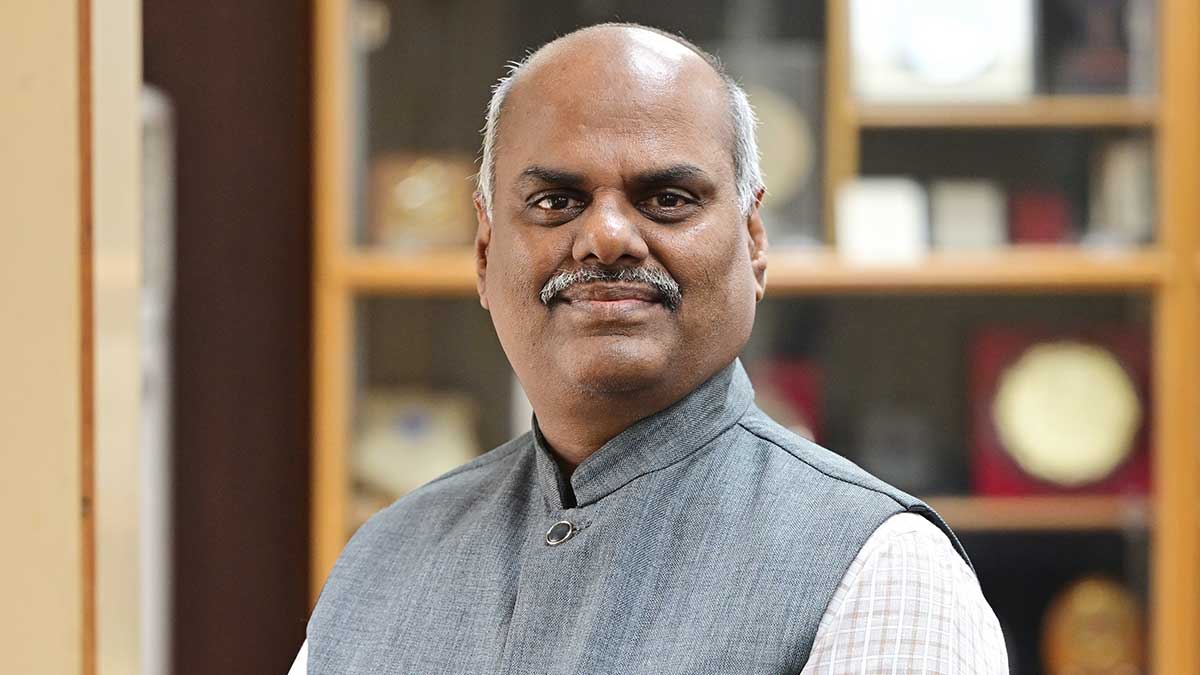Kaveri programme has led to development of Kaveri Marine Gas Turbine and a military-grade turbocharger for an armoured platform, says Dr S.V. Ramana Murthy, director, Gas Turbine Research Establishment, DRDO

Interview/ S.V. Ramana Murthy, director, Gas Turbine Research Establishment (GTRE)
WE HAVE BEEN churning out fighters in India, including the Sukhoi-30 at Hindustan Aeronautics Limited, yet have been unable to make an aero engine.
As of now, the aero engines are imported with platforms like M88 for Rafale fighter, or made under licence for engines like AL-31FP for Su-30 aircraft or imported for indigenous fighter aircraft like GE F404-IN20 for Light Combat Aircraft Mk1.
Kaveri is the first indigenous engine programme started in 1990. However, it is delinked from the LCA programme due to enhanced thrust requirement of the aircraft, marginal shortfall in performance and non-availability of a certified Kaveri engine to meet LCA timelines.
Q/ Why has India not been able to make an aero engine till date? Despite several prototypes, Kaveri is seen as a failed project.
A/Let me start with positives. The small turbofan engine has been designed and developed by the GTRE and flight-tested in cruise vehicles that have met all mission requirements. The GTRE has also developed the Kaveri Derivative Engine (KDE) and demonstrated performance and operability.
Generally it takes about two decades for development of technologies, engine and certification even for international engine houses (IEH). The engine development is taken up after the technology development with Technology Readiness Level (TRL) of 6, whereas in the Kaveri engine project, the engine development started with TRL levels of 2 to 3.
The reasons for delay were that we encountered developmental issues.... While the outside perspective may be that Kaveri is a failed project but achieving a TRL of 6 from a TRL of 2 itself is a success. An IEH carried out an in-depth technical audit and concluded that the Kaveri engine has attained a high level of maturity and could be airworthy for a limited flight envelope of LCA. Under this project, many aerospace alloys were type certified, component test facilities were established in the country, a Full Authority Digital Engine Controller (FADEC) was developed indigenously, Indian industries participated in the project and became part of the global supply chain, and academic institutes were involved in development of design and analysis tools and produced high quality manpower.
Q/ What is the status of the Kaveri project now?
A/ The KDE is being developed for Unmanned Combat Aerial Vehicle (UCAV) application. KDE has 75 per cent commonality with the Kaveri engine and UCAV specific technology insertions.... The KDE has demonstrated its full performance, operability and structural integrity.
Q/ It is understood that there have been a lot of spin-offs from the Kaveri project.
A/ The KDE being developed for UCAV with three critical technology insertions is the important spin-off.... The Kaveri engine project has also led to the development of the Kaveri Marine Gas Turbine, which demonstrated 12MW of shaft power at the Naval Dockyard, Visakhapatnam. The GTRE also delivered a military class turbocharger for the armoured weapon platform of 1,500HP diesel engine. A few small engine programmes are also on the anvil.
Q/ Are any international partners being drawn in for the development of aero engines?
A/ The GTRE has achieved competency and self-reliance in design, development and realisation of aero gas turbine engines for 4th generation combat aircraft applications. In the case of advanced high thrust class engines for 5th and 6th generation fighters, they encompass advanced technologies like high speed, high efficiency turbo machines with reduced number of stages, high-strength and high-temperature materials, innovative turbine blade cooling design, advanced manufacturing processes, damage tolerant component design with higher life and reduced weight. It is proposed to design and develop advanced high thrust class engine in collaboration with IEH to bridge the technology gaps.
Q/ What is the timeline for the 120kN engine development for the Advanced Medium Combat Aircraft with Safran?
A/ The GTRE will design and develop advanced high thrust class indigenous engine in collaboration with an IEH. The collaborative model and timelines are being worked out. The engines will be manufactured in India through development cum production partner. This programme will culminate in generating competency, capacity and capability to design, develop, manufacture, produce and deploy aero engines for future 5th and 6th generation of fighter aircraft.... The foreground intellectual property rights will be owned by the Indian government. With the technology building blocks developed, it will facilitate the design and development of other thrust class engines on our own and will help to establish an aero engine design and development ecosystem in the country.
The Week